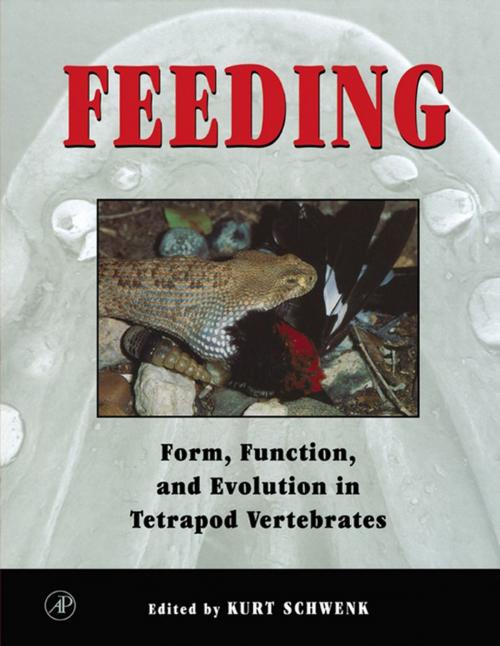Feeding
Form, Function and Evolution in Tetrapod Vertebrates
Nonfiction, Science & Nature, Science, Biological Sciences, Ecology, Zoology| Author: | ISBN: | 9780080531632 | |
| Publisher: | Elsevier Science | Publication: | August 3, 2000 |
| Imprint: | Academic Press | Language: | English |
| Author: | |
| ISBN: | 9780080531632 |
| Publisher: | Elsevier Science |
| Publication: | August 3, 2000 |
| Imprint: | Academic Press |
| Language: | English |
As the first four-legged vertebrates, called tetrapods, crept up along the shores of ancient primordial seas, feeding was among the most paramount of their concerns. Looking back into the mists of evolutionary time, fish-like ancestors can be seen transformed by natural selection and other evolutionary pressures into animals with feeding habitats as varied as an anteater and a whale. From frog to pheasant and salamander to snake, every lineage of tetrapods has evolved unique feeding anatomy and behavior.
Similarities in widely divergent tetrapods vividly illustrate their shared common ancestry. At the same time, numerous differences between and among tetrapods document the power and majesty that comprises organismal evolutionary history.
Feeding is a detailed survey of the varied ways that land vertebrates acquire food. The functional anatomy and the control of complex and dynamic structural components are recurrent themes of this volume. Luminaries in the discipline of feeding biology have joined forces to create a book certain to stimulate future studies of animal anatomy and behavior.
As the first four-legged vertebrates, called tetrapods, crept up along the shores of ancient primordial seas, feeding was among the most paramount of their concerns. Looking back into the mists of evolutionary time, fish-like ancestors can be seen transformed by natural selection and other evolutionary pressures into animals with feeding habitats as varied as an anteater and a whale. From frog to pheasant and salamander to snake, every lineage of tetrapods has evolved unique feeding anatomy and behavior.
Similarities in widely divergent tetrapods vividly illustrate their shared common ancestry. At the same time, numerous differences between and among tetrapods document the power and majesty that comprises organismal evolutionary history.
Feeding is a detailed survey of the varied ways that land vertebrates acquire food. The functional anatomy and the control of complex and dynamic structural components are recurrent themes of this volume. Luminaries in the discipline of feeding biology have joined forces to create a book certain to stimulate future studies of animal anatomy and behavior.















